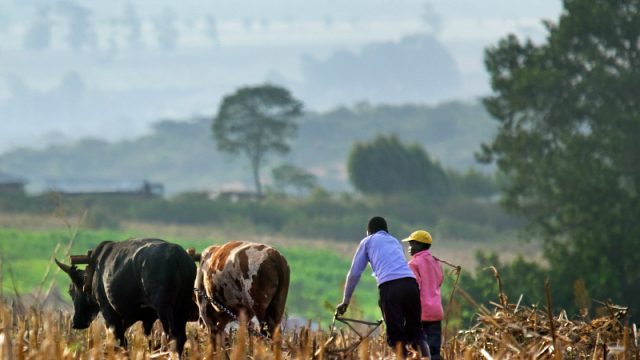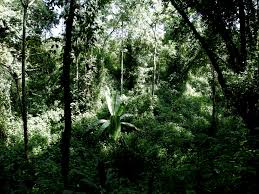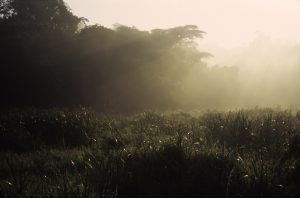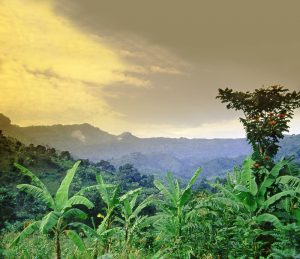Kenya is pretty much the land of the safari. The very word and concept was born here. Needless to say most visitors to Kenya have safaris (and perhaps the fabulous Indian Ocean beaches) at the top of their minds when their plane touches down in Nairobi. This is certainly no bad thing, and a couple of weeks in parks such as Tsavo, Amboseli and the Masai Mara will likely allow them to tick off a veritable Noah’s Ark worth of large mammals.
But what it might not do is give much of a feel for the Kenya that most Kenyans live in. This is where western Kenya comes a-knocking. Wet, forested, fertile, farmed, green – very green – and muddy. This is a region of Wellington boots, smoky tea shops, hectic market towns and locals who welcome rare tourists with big grins and open arms.
Although this human interaction is perhaps the biggest draw to a journey out west, there’s also plenty of natural world interest: mountains to climb, lakes to sail across and forests to traverse. Parks and reserves here tend to be small, low-key, and as often as not, can only be explored on foot (a rare pleasure if you’ve just spent two weeks cramped up in a safari Jeep). The wildlife out here is also different. Instead of elephant or buffalo (though there are a few of these) there’s a jungle’s worth of monkeys, birds and other creatures more commonly associated with central Africa.
Exploring the west can mean sacrificing a little luxury, but from our perspective there’s no more enjoyable and rewarding a corner of Kenya to explore. Let’s take a look at what’s in store for those who head west.
Kakamega Forest
If tourists come out west at all, it’s normally to visit Kakamega forest. It’s a good reason. Although the woodcutter’s chainsaw has taken its toll on this shadowy world of trees the size of tower blocks, this is still the last significant stand of Guineo-Congolian rainforest in Kenya. It contains butterflies (an amazing 400 species), masses of flitting, twitting birds, seven species of monkeys, and what can sometimes feel like a zillion different insects — many of which can be found nowhere else in Kenya. The forest is split into two zones: the northern Kakamega Forest National Reserve is the most unsullied but there’s less in the way of tourist accommodation; the southern, Kakamega Forest Reserve, is more disturbed but more commonly visited by tourists due to having better accommodation, cheaper entry fees and an award-winning community tourism association.
Saiwa Swamp
Tiny Saiwa Swamp National Park, close to the interesting town of Kitale, protects a three square kilometre patch of water-logged swamp and its thin womb of protecting jungle trees. Dainty though it might be, Saiwa is home to an impressive collection of animals including the half-duck/half-deer web-footed sitatunga antelope, black and white colobus monkeys and de Brazza’s monkeys. But it’s the bird life that is the real attraction. Amazingly this tucked-away little park is home to some 370 bird species including the African black duck, Narina trogons, the collared and orange-tufted sunbird, yellow bishop and Hatlaub’s marsh widow bird. One of the real delights of Saiwa is the opportunity it offers to get out and stretch the legs. Raised wooden boardwalks fringe and cross the swamp, meaning the only way to explore Saiwa is on foot.
Mount Elgon
East Africa offers some amazing trekking opportunities, but one of the most challenging, and interesting, mountains to climb is also one of the least known. Mount Elgon straddles the Kenya-Uganda border and peaks at a breathless 4187m in Kenya and 4321m in Uganda. The mountain massif spends much of its time shrouded in mist and rain clouds, and climbing it takes at least four, tough, exhausting and soaking days. You need to be self-sufficient and prepared for rain – a lot of rain – and very cold nights. Shorter walks around the forests at the base of the mountain lead to the Elkony caves, which were once famous for the elephants that entered in search of minerals. Today the elephants are much rarer.
Ruma National Park
Hilly, hot and covered in scrub forest and patches of open savannah grassland, Ruma is about as close as western Kenya gets to the classic East African savannah reserves and yet, even among frequent visitors to Kenya, this park is almost unknown. Of the very few people who make it out here, most come away surprised by just how much wildlife is visible. As well as hosting lots of zebra, topi and impala, Ruma is home to the huge, horse-like roan antelope and Kenya’s largest population of elegant — but sadly rare — Rothschild’s giraffes. Spend a morning here and you’ll almost certainly gaze on all these animals. But what would require a lot more luck to see are the park’s prized possessions, the 28 very shy rhinos (both black and white) which have recently been introduced here from other less-secure parks. There’s little in the way of a tourist infrastructure in the park, and most people base themselves in the nearest town, Homa Bay. If you’re serious about wildlife-watching though, bring camping gear and make use of one of the park’s attractive camping spots.
Kisumu
On paper at least, hot and steamy Kisumu, which sits on the shores of massive Lake Victoria, is one of the biggest towns in Kenya, but with just a couple of major streets and a go-slow tropical lethargy it feels like a bit of a backwater (but a charming one at that). There are enough sights in and around Kisumu to keep you occupied for a day. The impressive Kisumu Museum (Nairobi Road; KSh500/US$5) has displays of local life and an aquarium giving you a closer look at Victoria’s aquatic life. Hippo Point (from where you almost certainly won’t see a hippo) is the place to be at sunset, and boat rides can be organised from here. The city has a number of markets and superb, very cheap, barbecued fish is available from the string of wooden huts lining the lake shore at the end of Oginga Odinga Road.
The Islands of Lake Victoria
Africa’s largest lake (by surface area), Lake Victoria is the dominant geographical feature of western Kenya, but makes it onto very few travel itineraries. There are a number of islands on the lake populated by some of the most laid-back people you could hope to meet. This makes it a great place to get off the beaten track and immerse yourself in rural life. On Mfangano Island there are groups of rock paintings thought to have been created by the island’s original inhabitants hundreds of years ago. On Rusinga Island is the mausoleum and museum of Tom Mboya, one of the key players in Kenya’s independence movement. Wherever you go around Lake Victoria there is fabulous bird-watching.
Kericho
for a nice cup of tea? The small and orderly town of Kericho is the centre of Kenya’s, and by extension, Africa’s, tea industry. The hills around the town, which are pummelled by rain almost every afternoon year round, are carpeted with neat lines of low, luminous green tea bushes. There’s not much of a tea tourism industry here but just walking the fields behind the venerable but decrepit Tea Hotel is enjoyable, and with advance notice they can organise more formal tea estate tours.
Lodging and practical information
Travelling in western Kenya is a much more rough-and-ready experience than the main Kenyan safari circuit.
There are few top- or even mid-range hotels, and no real established tourist circuit. There are though lots of comfortable, if basic, family-run guesthouses:
- In Kakamega there are a number of different options, but we recommend the wonderful Rondo Retreat guesthouse (s/d full-board KSh17,600/22,000 US$175/220).
- Close to Saiwa Swamp, Sirikwa Safaris‘ Barnley’s Guesthouse (s/d KSh4500/6000/US$45/60) offers a homestyle style experience with the white Kenyan family who were instrumental in establishing the park.
- In Kisumu Le Savanna Country Lodge & Hotel (s/dKSh5750/6750 US$72/84) offers the smartest rooms in town amid a nice garden setting.
- Ruma National Park offers camping or an overpriced and very basic park run banda. For better accommodation head to lake side Homa Bay an hour or so drive away where the Homa Bay Tourist Hotel (s/d KSh2850/4350 US$28/45) has been providing simple but clean rooms and a lovely lakeside location to passing travellers for decades.
Related content on AFKTravel:
Top 10 Things To Do In Kisumu, Kenya
The Fighting Bulls of Western Kenya
12 Of The Best Places to See Rhinos in Kenya








